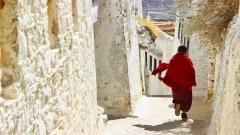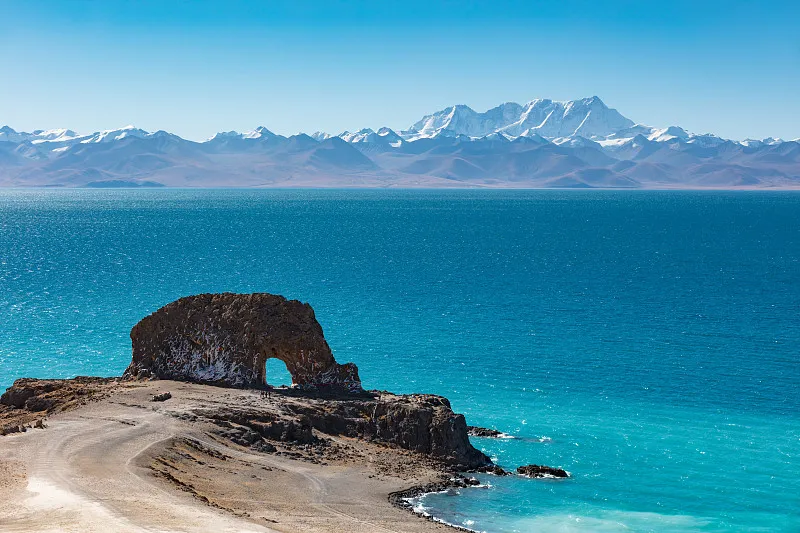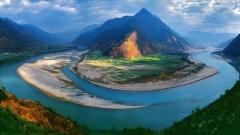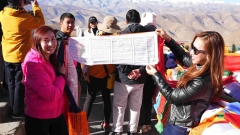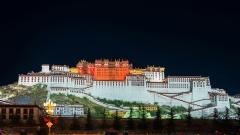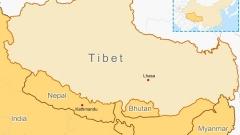Nestled atop Red Hill in the heart of Lhasa, Tibet, the Potala Palace soars to 3,750 m (12,300 ft) above sea level, making it the world’s highest palace. More than a dramatic silhouette against the Himalayan skyline, it embodies centuries of Tibetan religious devotion, political intrigue, and artistic achievement. Whether you’re planning a journey to the “Roof of the World” or simply curious about this UNESCO World Heritage Site, these 11 facts will bring the Potala Palace’s grandeur and mystery to life.
1. Location: On Top of the World
Perched on Red Hill in central Lhasa, the Potala Palace commands sweeping views of the city’s whitewashed dwellings, winding streets, and distant snow-capped peaks. Its defensive advantages made it a natural fortress; today, its elevation underscores its symbolic role as the spiritual apex of Tibetan Buddhism.

Lhasa Potala Palace
2. Origins: A 1,400-Year History
Construction began in 631 AD under Emperor Songtsen Gampo, who commissioned the original Red Palace. In the 17th century, the 5th Dalai Lama expanded the White Palace eastward, adding administrative quarters and assembly halls. Over the next two centuries, successive Dalai Lamas and patrons embellished the complex into the multilayered masterpiece we see today.
3. Purpose: Myth and Mystery
Legends claim Songtsen Gampo built the palace to welcome his Chinese Tang–dynasty bride, Princess Wencheng—but he was only six at the time. More plausible is that the original fortress was designed to guard against invaders. Whether palace of romance or bastion of defense, its origins remain shrouded in both history and folklore.
4. Prestige: More Than Just Altitude
Beyond its lofty elevation, the Potala Palace served as the winter residence of the Dalai Lamas for centuries. Within its walls, religious teachings were given, state affairs managed, and monumental ceremonies held. Today, its UNESCO status cements its place as one of humanity’s most treasured cultural landmarks.
5. Residents: From Emperors to Monks
Once home to Emperor Songtsen Gampo and Princess Wencheng, the palace later housed successive Dalai Lamas in private Yellow Chambers. After 1959 it ceased private occupancy and now functions as a museum, welcoming visitors to wander its storied halls.
6. Tickets and Timing: Planning Your Visit
- High Season (May–Oct): ¥200 CNY (≈ USD 30)
- Low Season (Nov–Apr): ¥100 CNY (≈ USD 15)
Daily visitor numbers are capped at 2,300. Tickets sell out fast in summer—book well in advance and allow one hour inside to see the highlights. Comfortable shoes and a steady pace are essential.

Lhasa Potala Palace
7. Color Symbolism: Red, White, and Gold
- Red Palace: Symbolizes dignity, virtue, and wisdom; contains chapels and shrines.
- White Palace: Represents purity and knowledge; housed governance and Dalai Lama living quarters.
- Golden Roofs: Crown stupas holding the remains of seven Dalai Lamas.
Yak-hair “blackshades” woven into the walls ward off evil spirits and complete the traditional Tibetan color palette.
8. Secret Chambers: The “1,000-Room” Enigma
Sources vary: some claim “over 1,000” rooms, others insist on exactly 999 or 1,000. The palace’s labyrinthine layout—13 stories of chapels, shrines, offices, and living quarters—keeps the true count a tantalizing mystery.
9. Inside the Walls: Art, Architecture, and Artifacts
Key highlights include:
- Assembly Halls & Dormitories: Monastic life and theological debate.
- Dalai Lama Stupas: Ornate silver and gold reliquaries.
- Thangkas & Murals: Over 340 m² of scroll paintings depicting Buddhist cosmology and historic scenes.
- Carvings: Wood, stone, and clay reliefs of deities and daily life.
Massive masonry walls (up to 5 m thick at the base) and ventilation holes speak to both ancient engineering and modern preservation.
10. Underground Legends: Tunnels to Shangri-La?
Palace officials confirm tunnels beneath Red Hill—but their destinations remain secret. Rumors connect them to Lhasa’s Jokhang Temple or even the mythical Shambhala, adding another layer of intrigue to this iconic site.
11. Quick Trivia: Surprising Details
- Milk-Based Whitewash: Walls are repainted yearly with a blend of milk, honey, sugar, saffron, and herbs.
- 365 Steps: A symbolic ascent—one step for each day of the year—to the Red Palace.
- Deepest Toilet: A public latrine north of the White Palace drops over 60 m underground.
- Changing Vistas: Once surrounded by barren hills, the palace now overlooks a vibrant modern city.
From its sky-high elevation to its subterranean secrets, the Potala Palace stands as a pinnacle of human creativity, faith, and resilience. Every stupa, every mural, every stone tells a tale of power, devotion, and artistry. Whether you’re a historian, a pilgrim, or a curious traveler, this Crown Jewel of the Himalayas promises an experience you’ll never forget.
Plan Your Tibet Adventure
China Dragon Travel offers bespoke tours, expert local guides, and hassle-free itineraries to ensure you experience the Potala Palace—and all of Tibet’s wonders—in comfort and style. Contact us today to start your journey to the Roof of the World.







